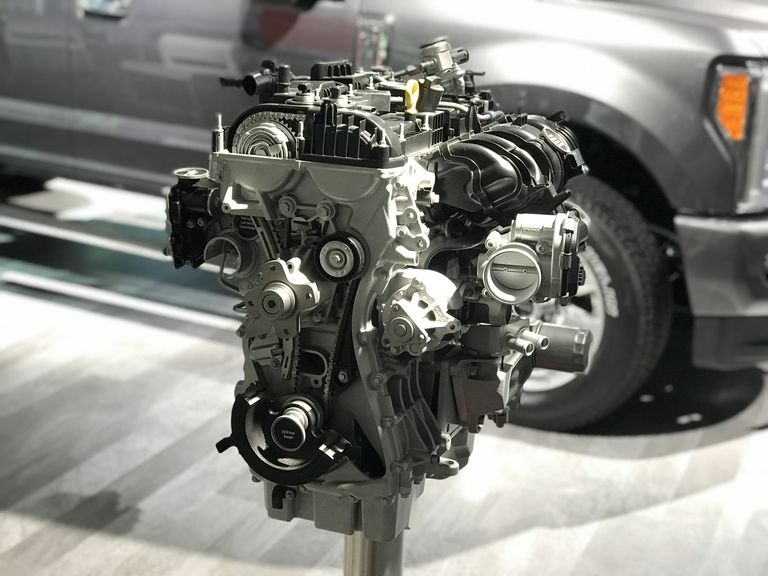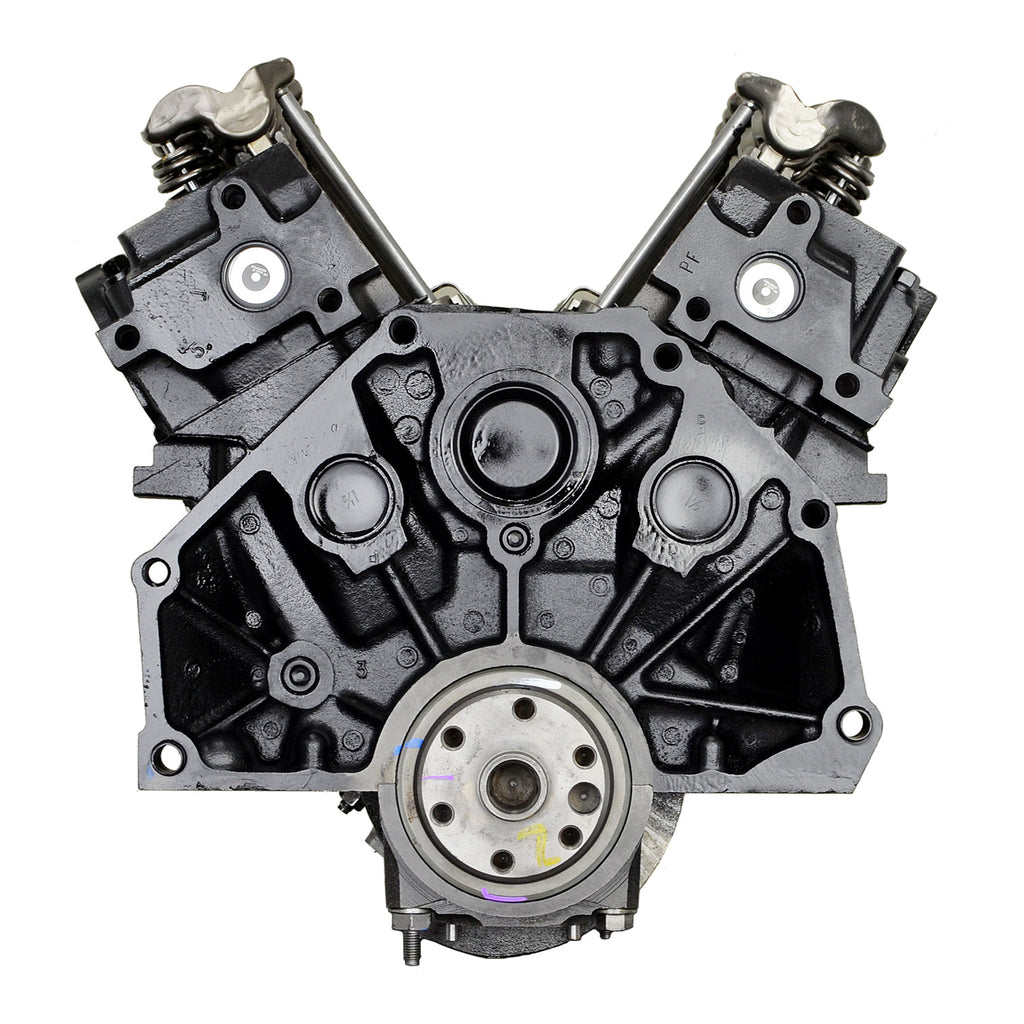Is the 2.2 Ford Ranger Engine the Right Fit for Your Driving and Work Needs?
Is the 2.2 Ford Ranger Engine the Right Fit for Your Driving and Work Needs?
Blog Article
Understanding the Fundamentals of Automobile Engines: Functions, kinds, and features

Overview of Car Engines
A vehicle engine works as the heart of an automobile, converting fuel right into power to push it onward. This complex system makes up different components that work in unison to ensure optimum efficiency and effectiveness. The basic operation of an automobile engine includes the internal burning process, where fuel and air are mixed, fired up, and expelled to produce power.
The engine's design can dramatically affect its efficiency, fuel performance, and discharges. Key parts consist of the cylinder block, pistons, crankshaft, and camshaft, each playing a crucial role in the engine's total function. The cyndrical tube block houses the cyndrical tubes where combustion takes place, while the pistons convert the eruptive energy from burning right into linear movement. This activity is after that transformed right into rotational energy by the crankshaft, enabling the automobile's wheels to transform.
Along with these components, engines commonly use different systems such as gas shot, ignition, and cooling systems to boost efficiency and longevity. Recognizing the standard mechanics of car engines is essential for detecting issues and carrying out upkeep, ultimately contributing to the vehicle's reliability and effectiveness in time.

Kinds Of Vehicle Engines
Vehicle engines can be categorized right into a number of types based on their style, fuel kind, and functional principles. 2.2 ford ranger engine. One of the most usual classifications include internal combustion engines (ICE), electrical engines, and hybrid engines
Internal burning engines, which can be further split right into fuel and diesel motor, run by sparking a fuel-air combination to produce power. Gas engines are typically lighter and smoother, while diesel engines are extra fuel-efficient and offer greater torque.
Electric engines utilize electric power kept in batteries to power an electric motor, offering instant torque and zero discharges during procedure. As innovation breakthroughs, electrical vehicles (EVs) are increasingly coming to be preferred for their environmental benefits and reduced running costs.
Hybrid engines combine components of both internal burning and electrical engines, enabling for flexible power sources and boosted fuel effectiveness. They can run in numerous modes, making use of either the gas engine, the electric motor, or both concurrently.
Each kind of engine has distinct advantages and downsides, influencing their application in different automobile kinds and market sectors, from portable automobiles to durable vehicles. Recognizing these kinds is vital for making educated decisions pertaining to car choice and performance assumptions.
Engine Functions Clarified
Recognizing engine features is critical for grasping just how automobiles operate efficiently. At the core of any type of inner combustion engine lies the fundamental procedure of transforming gas into mechanical energy.
The ignition takes place next, stiring up the mixture and producing a quick expansion of gases. This force drives the piston down throughout the power stroke, which ultimately equates right into the rotational movement of the crankshaft. The exhaust stroke then removes the invested gases from the chamber, giving way for a new cycle to commence.
Along with these key features, engines also integrate systems that manage cooling and lubrication, ensuring ideal functional temperature levels and minimizing rubbing between moving parts. This intricate interplay of features makes it possible for the engine to produce the power essential for car propulsion while preserving effectiveness and reliability. Comprehending these functions gives important insight into the intricacies of auto design and improves the capability to detect and deal with engine-related concerns effectively.
Key Engine Features
Engine design includes a number of vital attributes that significantly influence performance, efficiency, and toughness. One of the most vital aspects is the engine setup, that includes inline, V-type, and level styles. Each setup impacts the engine's dimension, power, and equilibrium outcome, thus influencing overall vehicle dynamics.
An additional crucial feature is the engine displacement, describing the overall volume of all cylinders. Bigger displacements commonly yield more power but might jeopardize fuel effectiveness. Engine products likewise play a crucial function; light-weight and high-strength products, such as aluminum and magnesium alloys, enhance efficiency without including too much weight.
The sort of gas injection system utilized-- such as direct or multi-port injection-- influences combustion performance and exhausts. Turbo charging and turbocharging are features that improve engine performance by compeling additional air right into the combustion chamber, boosting power output without significantly enhancing engine size.
Finally, the existence of advanced engine management systems enhances fuel-air combination and ignition timing, adding to smoother procedure and far better fuel economy. Collectively, these features specify an engine's capacities, setting the structure for its efficiency and durability in a competitive vehicle landscape.
Upkeep Tips for Engines
Proper engine upkeep is important for making certain optimum efficiency and long life, as neglecting routine treatment can cause substantial concerns down the line. To pop over here keep your engine properly, start with routine oil modifications, commonly every 3,000 to 7,500 miles, relying on the type of oil utilized. Fresh oil lubricates engine parts, decreasing rubbing and wear.
Additionally, checking coolant levels is important to protect against overheating. Guarantee that the coolant is topped up and remains in great problem to keep reliable temperature level regulation. Consistently replace and examine air and gas filters, as blocked filters can prevent airflow and fuel distribution, jeopardizing engine efficiency.
Additionally, take notice of spark plugs and ignition systems. Worn or defective stimulate plugs can result in misfiring and decreased performance. Checking the battery terminals and links for rust is additionally essential, as a weak battery can influence try this out engine beginning.

Final Thought
In recap, an extensive understanding of vehicle engines incorporates different kinds, functions, and vital features that considerably affect automobile efficiency. Interior burning engines, along with hybrid and electrical alternatives, show diverse mechanisms for energy conversion. 2.2 ford ranger engine. Identifying the important functions, such as consumption and exhaust cycles, alongside important engine functions like configuration and fuel shot systems, outfits cars and truck proprietors with the expertise essential for reliable maintenance and operation, eventually boosting vehicle long life and efficiency
A car engine offers as the heart of an automobile, converting gas right into mechanical energy to drive it forward. The essential procedure of a vehicle engine includes the inner burning procedure, where fuel and air are blended, ignited, and expelled to create power.
Routinely change and examine air and fuel filters, as clogged filters can look at this web-site prevent air flow and fuel shipment, compromising engine efficiency. - 2.2 ford ranger engine
In summary, a thorough understanding of cars and truck engines incorporates different kinds, features, and key attributes that significantly affect automobile efficiency. Identifying the important functions, such as consumption and exhaust cycles, together with vital engine features like arrangement and fuel injection systems, gears up cars and truck proprietors with the expertise necessary for effective maintenance and operation, eventually enhancing automobile long life and performance.
Report this page